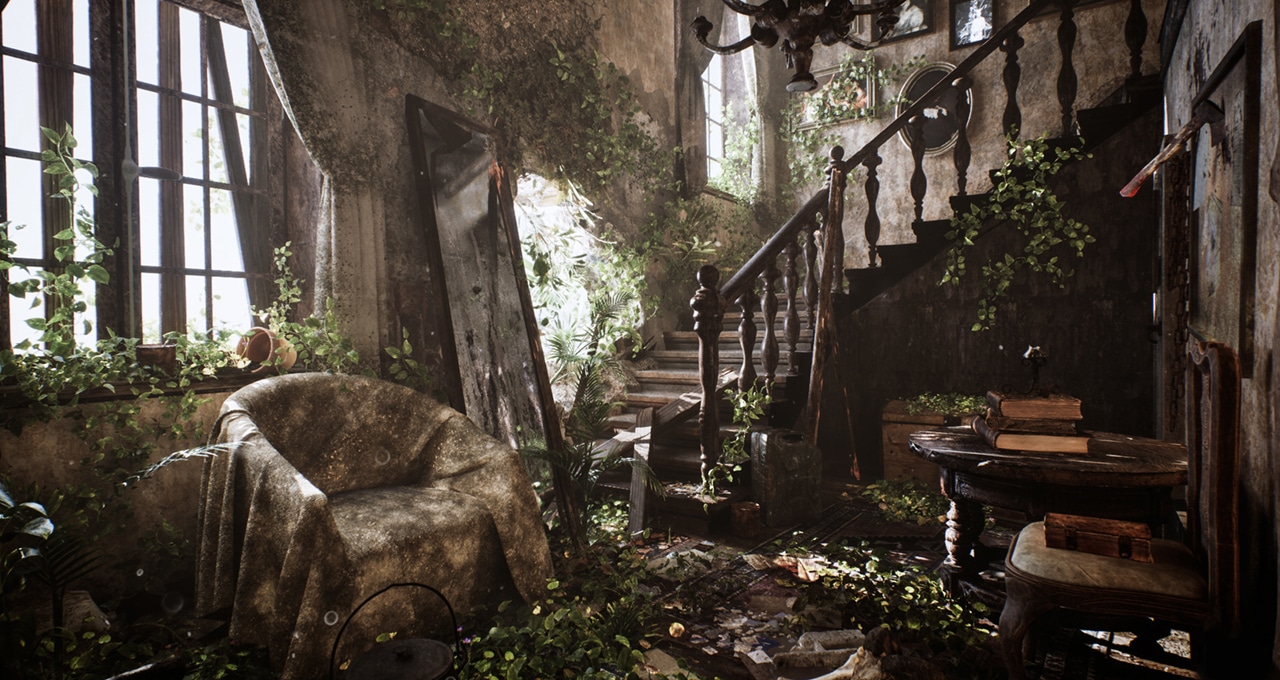Editor’s note: This post is part of our weekly In the NVIDIA Studio series, which celebrates featured artists, offers creative tips and tricks, and demonstrates how NVIDIA Studio technology improves creative workflows. In the coming weeks, we’ll deep dive on new GeForce RTX 40 Series GPU features, technologies and resources, and how they dramatically accelerate content creation.
Creators can now pick up the GeForce RTX 4090 GPU, available from top add-in card providers including ASUS, Colorful, Gainward, Galaxy, GIGABYTE, INNO3D, MSI, Palit, PNY and ZOTAC, as well as from system integrators and builders worldwide.
Fall has arrived, and with it comes the perfect time to showcase the beautiful, harrowing video, Old Abandoned Haunted Mansion, created by 3D artist and principal lighting expert Pasquale Scionti this week In the NVIDIA Studio.
Artists like Scionti can create at the speed of light with the help of RTX 40 Series GPUs alongside 110 RTX-accelerated apps, the NVIDIA Studio suite of software and dedicated Studio Drivers.
A Quantum Leap in Creative Performance
The new GeForce RTX 4090 GPU brings an extraordinary boost in performance, third-generation RT Cores, fourth-generation Tensor Cores, an eighth-generation NVIDIA Dual AV1 Encoder and 24GB of Micron G6X memory capable of reaching 1TB/s bandwidth.
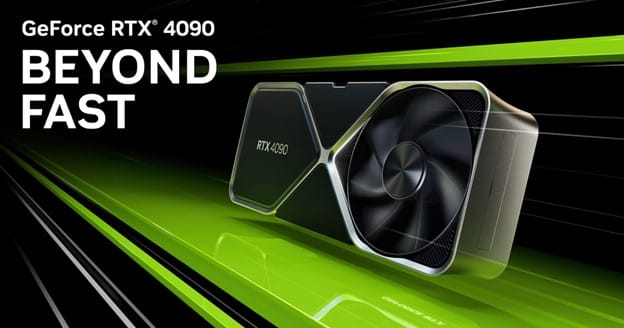
3D artists can now build scenes in fully ray-traced environments with accurate physics and realistic materials — all in real time, without proxies. DLSS 3 technology uses the AI-powered RTX Tensor Cores and a new Optical Flow Accelerator to generate additional frames and dramatically increase frames per second (FPS). This improves smoothness and speeds up movement in the viewport. NVIDIA is working with popular 3D apps Unity and Unreal Engine 5 to integrate DLSS 3.
DLSS 3 will also benefit workflows in the NVIDIA Omniverse platform for building and connecting custom 3D pipelines. New Omniverse tools such as NVIDIA RTX Remix for modders, which was used to create Portal with RTX, will be game changers for 3D content creation.
Video and live-streaming creative workflows are also turbocharged as the new AV1 encoder delivers 40% increased efficiency, unlocking higher resolution and crisper image quality. Expect AV1 integration in OBS Studio, DaVinci Resolve and Adobe Premiere Pro (though the Voukoder plugin) later this month.
The new dual encoders capture up to 8K resolution at 60 FPS in real time via GeForce Experience and OBS Studio, and cut video export times nearly in half. These encoders will be enabled in popular video-editing apps including Blackmagic Design’s DaVinci Resolve, the Voukoder plugin for Adobe Premiere Pro, and Jianying Pro — China’s top video-editing app — later this month.
State-of-the-art AI technology, like AI image generators and new video-editing tools in DaVinci Resolve, is ushering in the next step in the AI revolution, delivering up to a 2x increase in performance over the previous generation.
To break technological barriers and expand creative possibilities, pick up the GeForce RTX 4090 GPU today. Check out this product finder for retail availability.
Haunted Mansion Origins
The visual impact of Old Abandoned Haunted Mansion is nothing short of remarkable, with photorealistic details for lighting and shadows and stunningly accurate textures.
However, it’s Scionti’s intentional omission of specific detail that allows viewers to construct their own narrative, a staple of his work.
Scionti highlighted additional mysterious features he created within the haunted mansion: a painting with a specter on the stairs, knocked-over furniture, a portrait of a woman who might’ve lived there and a mirror smashed in the middle as if someone struck it.
“Perhaps whatever happened is still in these walls,” mused Scionti. “Abandoned, reclaimed by nature.”
Scionti said he finds inspiration in the works of H.R. Giger, H.P. Lovecraft and Edgar Allan Poe, and often dreams of the worlds he aspires to build before bringing them to life in 3D. He stressed, however, “I don’t have a dark side! It just appears in my work!”
For Old Abandoned Haunted Mansion, the artist began by creating a moodboard featuring abandoned places. He specifically included structures that were reclaimed by nature to create a warm mood with the sun filtering in from windows, doors and broken walls.
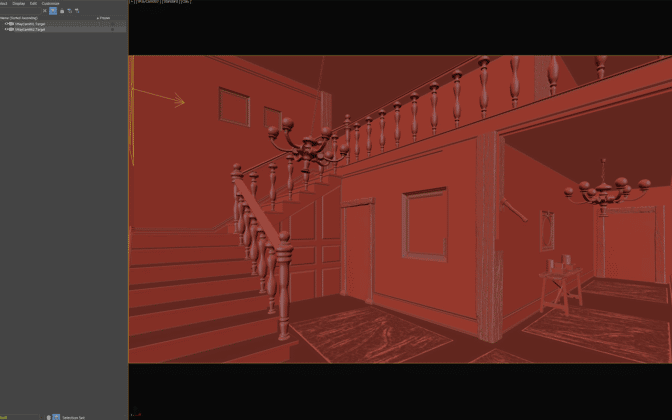
Scionti then modeled the scene’s objects, such as the ceiling lamp, painting frames and staircase, using Autodesk 3ds Max. By using a GeForce RTX 3090 GPU and selecting the default Autodesk Arnold renderer, he deployed RTX-accelerated AI denoising, resulting in interactive renders that were easy to edit while maintaining photorealism.
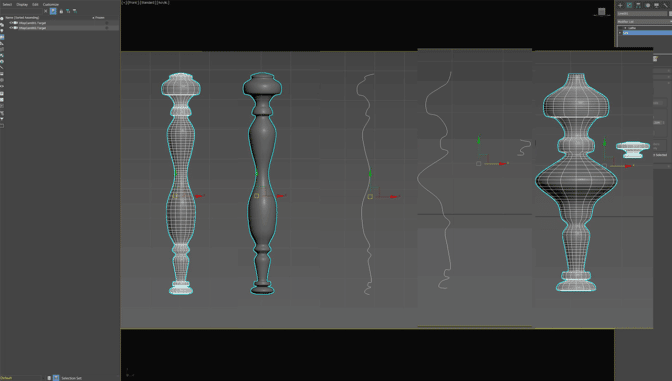
The versatile Autodesk 3ds Max software supports third-party GPU-accelerated renderers such as V-Ray, OctaneRender and Redshift, giving RTX owners additional options for their creative workflows.
When it comes time to export the renders, Scionti will soon be able to use GeForce RTX 40 Series GPUs to do so up to 80% faster than the previous generation.
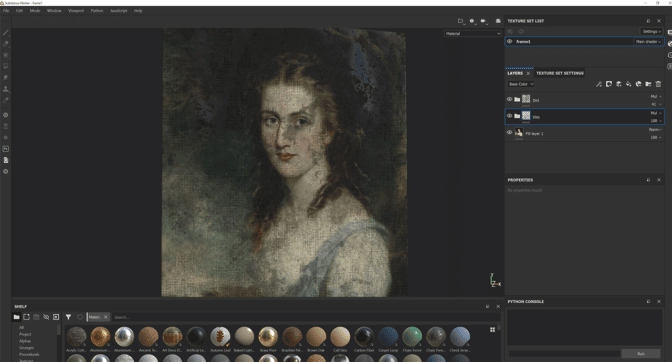
Scionti imported the models, like the ceiling lamp and various paintings, into Adobe Substance 3D Painter to apply unique textures. The artist used RTX-accelerated light and ambient occlusion to bake his assets in mere seconds.
Modeling techniques for the curtains, the drape on the armchair and the ghostly figure were created using Marvelous Designer, a realistic cloth-making program for 3D artists. In a system-requirements page, the Marvelous Designer team recommends using GeForce RTX 30 and other NVIDIA RTX GPU class GPUs, as well as downloading the latest NVIDIA Studio Driver.
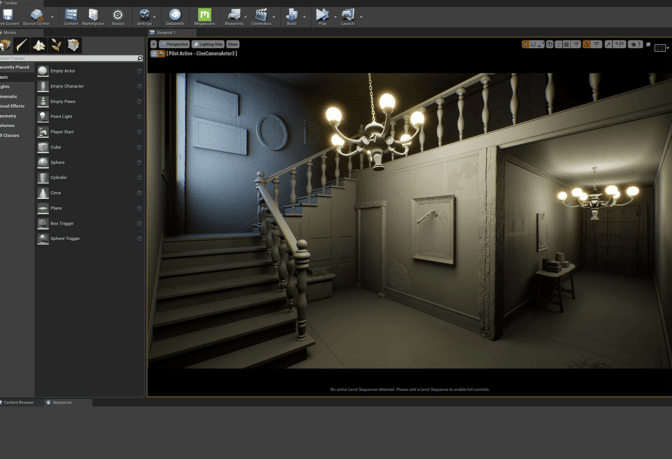
Additional objects like the wooden ceiling were created using Quixel Mixer, an all-in-one texturing and material-creation tool designed to be intuitive and extremely fast.
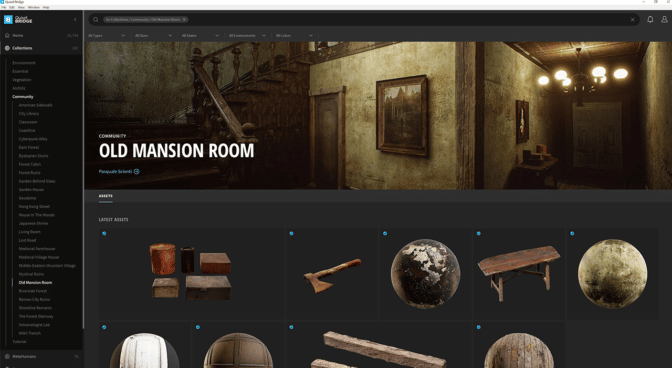
Scionti then searched Quixel Megascans, the largest and fastest growing 3D can library, to acquire the remaining assets to round out the piece.
With the composition in place, Scionti applied final details in Unreal Engine 5.
RTX ON in Unreal Engine 5
Scionti used Unreal Engine 5, activating hardware-accelerated RTX ray tracing for high-fidelity, interactive visualization of 3D designs. He was further aided by NVIDIA DLSS, which uses AI to upscale frames rendered at lower resolution while retaining high-fidelity detail. The artist then constructed the scene rich with beautiful lighting, shadows and textures.
The new GeForce RTX 40 Series GPU lineup will use DLSS 3 — coming soon to UE5 — with AI Frame Generation to further enhance interactivity in the viewport.
Scionti perfected his lighting with Lumen, UE5’s fully dynamic global illumination and reflections system, supported by GeForce RTX GPUs.
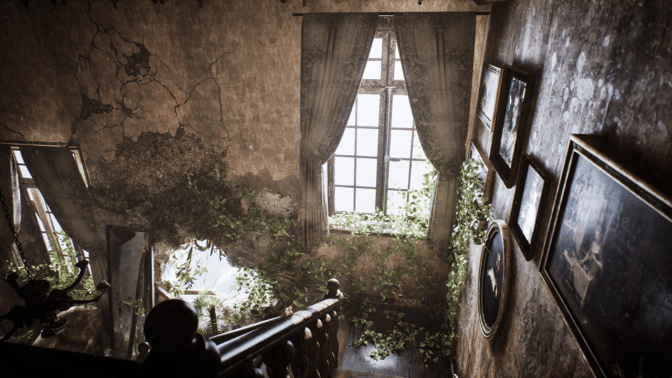
“Nanite meshes were useful to have high polygons for close up details,” noted Scionti. “For lighting, I used the sun and sky, but to add even more light, I inserted rectangular light sources outside each opening, like the windows and the broken wall.”
To complete the video, Scionti added a deliberately paced, instrumental score which consists of a piano, violin, synthesizer and drum. The music injects an unexpected emotional element to the piece.
Scionti reflected on his creative journey, which he considers a relentless pursuit of knowledge and perfecting his craft. “The pride of seeing years of commitment and passion being recognized is incredible, and that drive has led me to where I am today,” he said.
To embark on an Unreal Engine 5-powered creative journey through desert scenes, alien landscapes, abandoned towns, castle ruins and beyond, check out the latest NVIDIA Studio Standout featuring some of the most talented 3D artists, including Scionti.
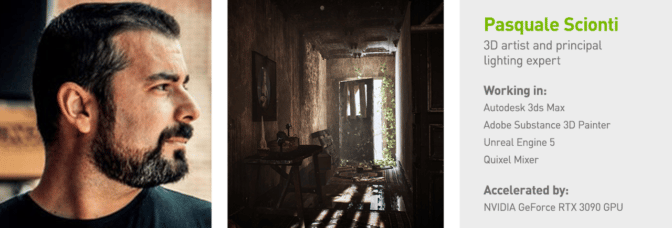
For more, explore Scionti’s Instagram.
Join the #From2Dto3D challenge
Scionti brought Old Abandoned Haunted Mansion from 2D beauty into 3D realism — and the NVIDIA Studio team wants to see more 2D to 3D progress.
Join the #From2Dto3D challenge this month for a chance to be featured on the NVIDIA Studio social media channels, like @juliestrator, whose delightfully cute illustration is elevated in 3D:
Here's another example for inspiration…😜
Credit: @juliestrator pic.twitter.com/RsY6nLg8pT
— NVIDIA Studio (@NVIDIAStudio) October 3, 2022
Entering is quick and easy. Simply post a 2D piece of art next to a 3D rendition of it on Instagram, Twitter or Facebook. And be sure to tag #From2Dto3D to enter.
Get creativity-inspiring updates directly to your inbox by subscribing to the NVIDIA Studio newsletter.
